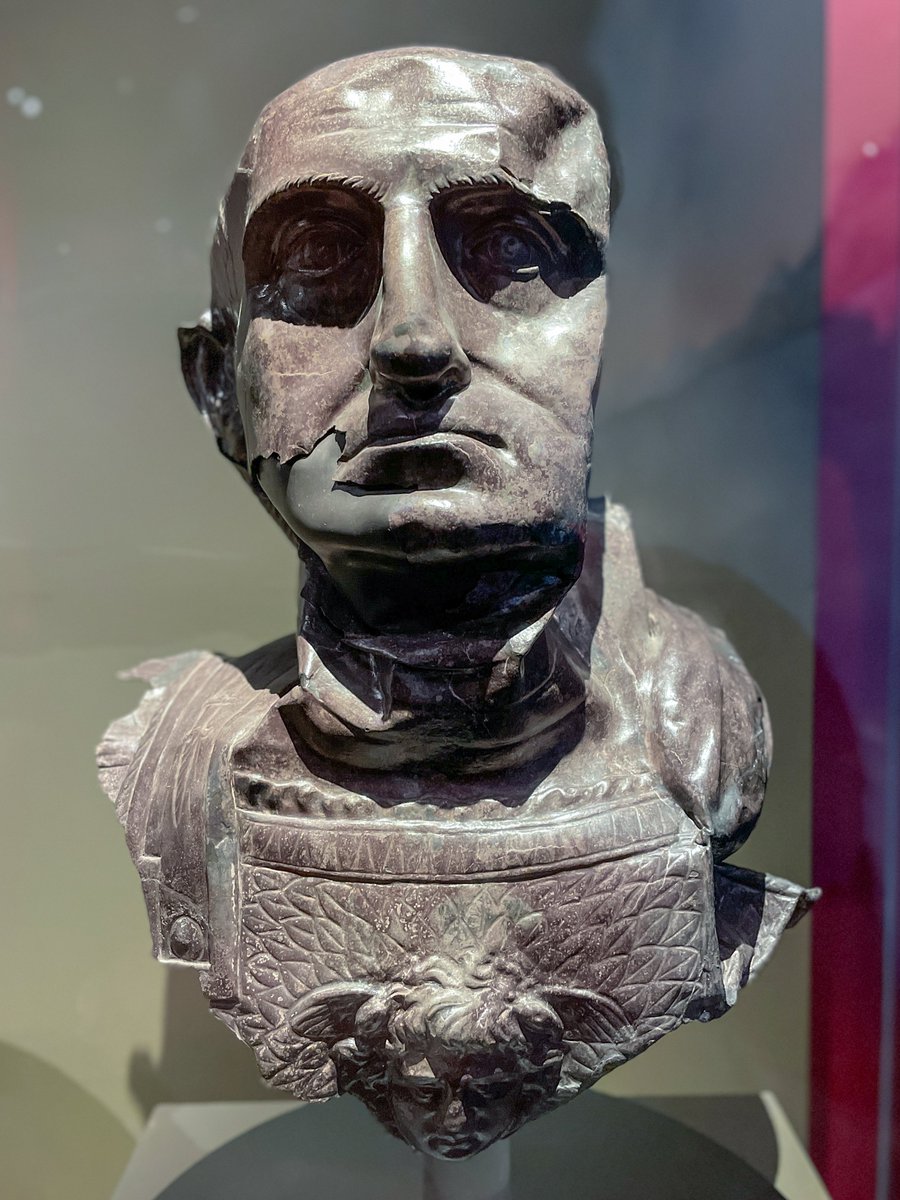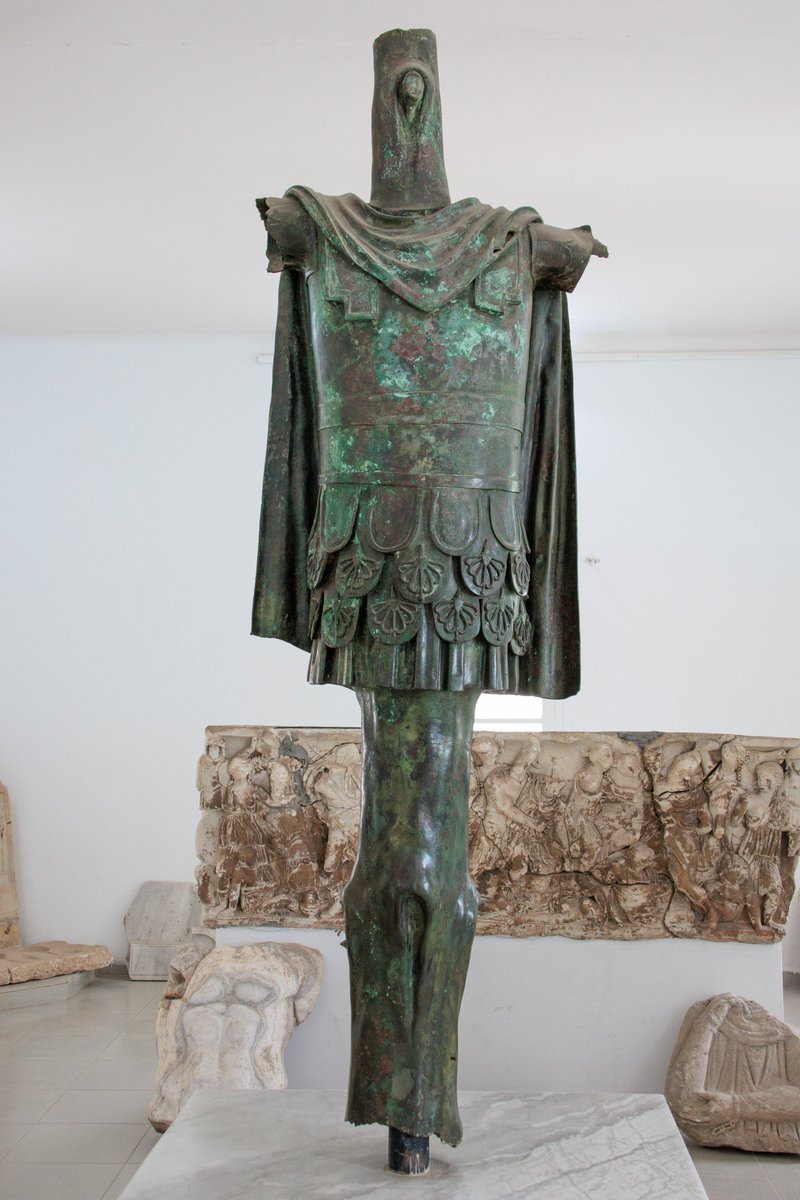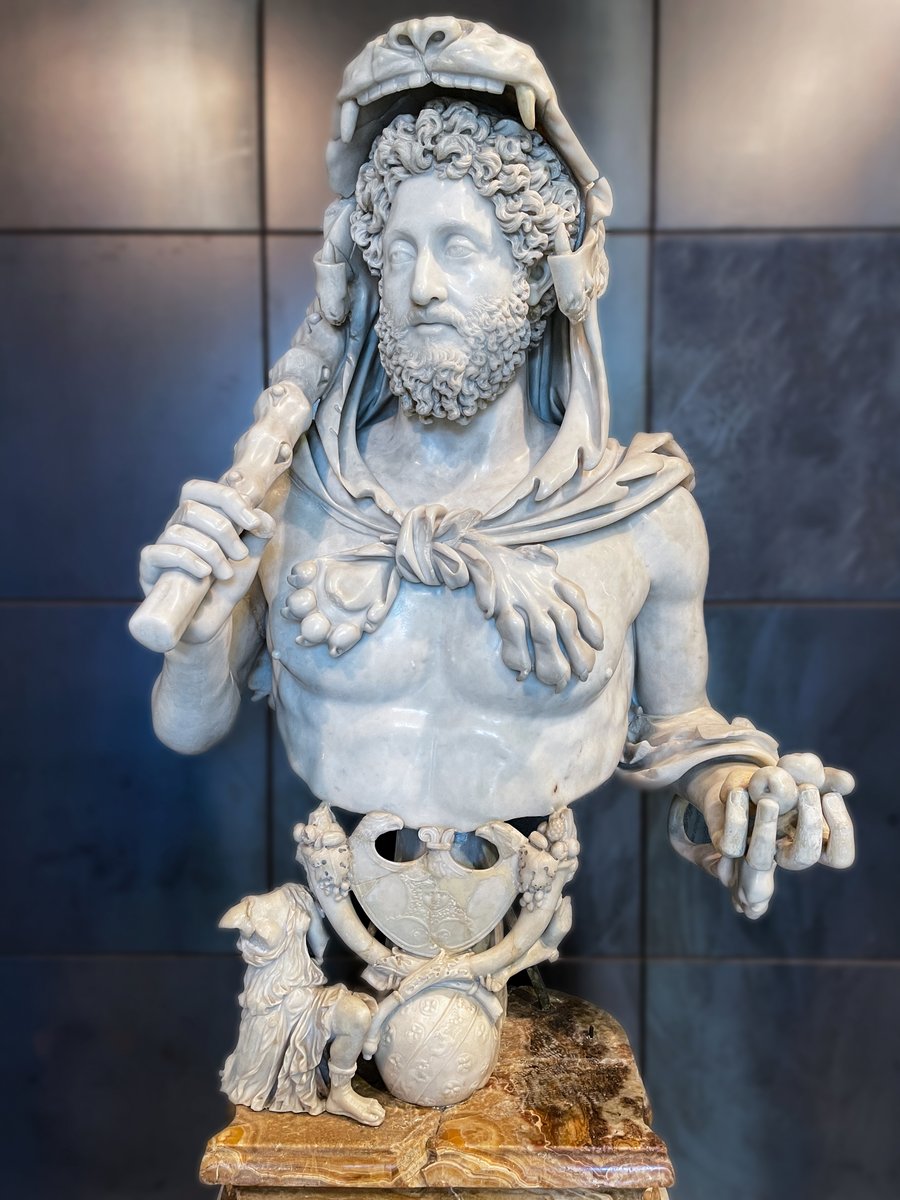1) The brightly painted terracotta sarcophagus of Seianti Hanunia Tlesnasa, an Etruscan woman who was buried near Chiusi around 150 BC. Inside was found Seianti's skeleton, the most complete Etruscan skeleton in existence. Let's meet Seianti and learn a little about her life.. 

2) The sarcophagus was found alone in a tomb specially made for Seianti. On the lid she reclines in an almost lifesize depiction. Her fine clothing and jewellery speak of her wealth, she wears a diadem, gold snake bracelets, gold-garnet earrings and six rings on her left hand.. 

3) Seianti wears a traditional white tunic and heavier veil which she lifts to reveal her face. It is possible that Seianti is being shown in the wedding clothes she wore at a younger age, as she prepares to meet her husband again in the afterlife.. 

4) Seianti holds a folding compact-mirror (interestingly shown in a corroded green colour) and rests on her left elbow as she would have reclined at a banquet. Seianti's bones were closely examined by pathologists and revealed some fascinating insights about her life and health.. 

5) Little sign of arrested development in Seianti's bones speaks of a healthy childhood. Evidence of hypertrophy in her leg bones suggests she did a good deal of horse riding in her youth. Also, the angulation of her pelvis tells us she had at least one pregnancy in her life.. 

6) An extraordinary injury to the side of Seianti's pelvis is consistent with riding accidents where the animal rolls on top of the rider. Amazingly, experts can assert with some confidence that Seianti survived a serious horse riding accident when she was around 16 years old. 

7) Seianti had lost a good number of teeth with some appearing to have been knocked out at some point in her life. Towards the end of her life she suffered a painful dental abscess which would have drained puss into her mouth or even through a hole in the side of her face.. 

8) Consequently, Seianti would have been halitotic (bad breath) and was likely unable to fully close her mouth. Seianti was otherwise healthy with no evidence of metastatic cancer or anemia. It is likely that Seianti died around age 50-55 of infection or cardio-vascular disease. 

9) Finally, Seianti's skull was given a forensic facial reconstruction: the face of Seianti Hanunia Tlesnasa, beautified a little for the next world but recognisable as the figure reclining on her sarcophagus. Seianti's sarcophagus can today be viewed at the British Museum. {END} 

If you would like to learn more about Seianti, check out this fascinating 4-part series:
• • •
Missing some Tweet in this thread? You can try to
force a refresh






















